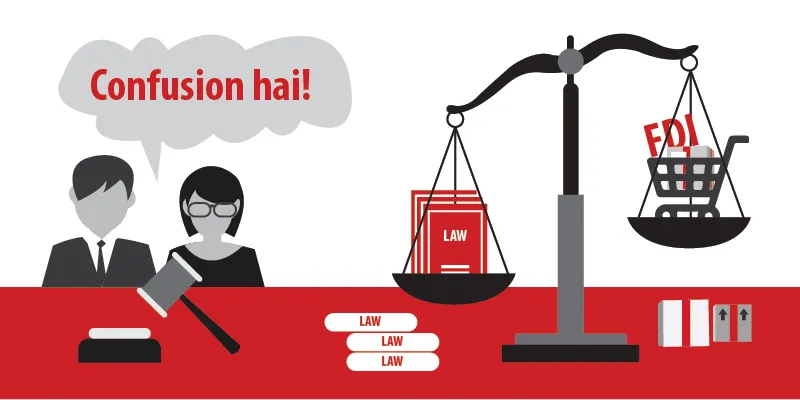Reading between the new FDI guidelines in e-commerce
The recent guidelines issued by the Department of Industrial Policy and Promotion (DIPP) relating to foreign direct investment (FDI) in e-commerce appear to have evoked a mixed response from the industry. Some people term it as ambiguous with much of the literature left to interpretation. The impact of the new guidelines could spread beyond the deep discounts that many have already written extensively on.

New Definitions
- In the said guidelines where DIPP has issued rules pertaining to limits in FDI in India in e-commerce, in a first, the Government has attempted to define an ‘e-commerce entity’ as “a company incorporated under the Companies Act (1956 or 2013), or a foreign company as defined in the Companies Act 2013 or an office, branch or agency in India owned and controlled by a person resident outside India and conducting the e-commerce business”.
- It also defines ‘e-commerce’ but we should note that the FDI policy issued by DIPP each year already explains what e-commerce activities entail (reproduced below from the latest FDI policy).
An e-commerce activity refers to ‘the activity of buying and selling’ by a company through the e-commerce platform. It further clarifies that such companies would engage only in Business to Business (B2B) e-commerce and not in retail trading and concludes that FDI restrictions in domestic trading (or physical retail) would also apply to e-commerce.
In contrast, the new guidelines define e-commerce to mean the “buying and selling of goods and services including digital products over the digital and electronic network”.
What changes in the definition of e-commerce?
- The difference is visible raising some basic questions. For instance, one could wonder why at all use ‘digital products’ in the definition as per the guidelines, because buying and selling would not de-facto exclude digital products. But DIPP has specifically provided for such an inclusion. The reason could be simplistic but maybe DIPP could elaborate on this by commenting on other things that it would include.
- Next, what comprises a digital and electronic network? Would this include purchases and sales through a call from the landline phone or tele-marketing? The guidelines provide that digital and electronic networks include television channels. India has a handful of channels that sell goods where FDI has already been specified. Is there an obvious overlap?
New Structures: of Inventory-based and marketplace models
The guidelines also define ‘inventory-based’ and ‘marketplace’ models of e-commerce. In an inventory-based model, the entity owns the inventory it sells, and in the latter, the entity is only a facilitator. For example, if FabIndia were to sell its clothes through its own online store, it would be an ‘inventory-based’ model. Were another online entity, say Flipkart, to sell FabIndia’s clothes online (hypothetically), it would be termed a ‘market-based’ model. Per the guidelines, FDI shall not be allowed in an inventory-based model but 100% FDI is allowed in the market-based model. Further, the guidelines provide that a marketplace entity may provide support services in the form of logistics or warehouse or call-centre or payment collection support.
Per se, hosting an online marketplace is not expensive. Is it then fair to deduce that entities can form another company providing such support services where FDI maybe allowed?
Sans free market
Are some of the conditions provided in the guidelines imposing? Two in particular stand out.
- Over 25% of sales through the marketplace shall not be permitted from one vendor or through the vendor’s group companies:This may not be commercially viable always although the prima-facie intent appears logical. This is because the condition appears restrictive in an oligopsonistic market theoretically, or in a situation where a startup has only limited vendors.
- Further, the term ‘sales’ in the stipulated condition is undefined. DIPP could clarify on whether it means in revenue terms or whether it is in terms of GMV (gross merchandise value) of products/ services.
- The other condition relates to a marketplace model not influencing the sale price directly or indirectly: This would, as has been already written about in many other articles, impact online retail discounts. However it is ironical that there are no restrictions for a physical store to offer discounts, while restricting competition by asking the marketplace e-commerce entities to maintain a level playing field.
So would the next 12-18 months differentiate the ‘winners’ and provide them the holy grail of digital e-commerce, a defensible moat? To borrow from Shakespeare, we know not what it is, but know not what it may be.
(Disclaimer: The views and opinions expressed in this article are those of the author and do not necessarily reflect the views of YourStory.)







